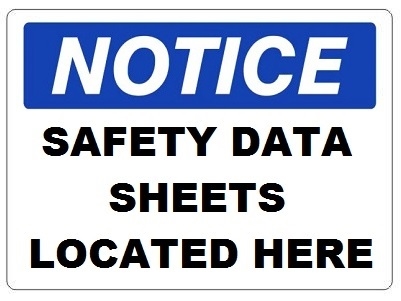 Significance of GHS Safety Data Sheets (SDS).
Significance of GHS Safety Data Sheets (SDS).
A lot of countries around the world have started using the UN globally harmonized system for classifying and labeling chemicals. This is done to attain some objectives.
One aim of doing this is protecting the health of workers who process, store and transport chemicals. Another aim of this is to safeguard the environment. A uniform classification system enhances the proper identification of the chemical’s hazardous levels. In the past, some countries did not have any classification method. The countries that had classification systems classified their chemicals in a different way than others. As a result, this led to a lot of confusion in handling chemicals and imposing risky situations.
GHS safety data sheets were developed based on an extensive study. The study was meant to solve the classification differences. It was meant at bringing uniformity in classification and categorization while ensuring that the protection levels are still high.
The classification considers the hazardous properties of the chemicals and the chemical formulation. It also takes into account the reactivity of the chemical with other chemicals, air, and water. GHS SDS was therefore made in a way to protect the people who are in the sectors of production, storage, and transportation, as well as the end user. GHS was revised many times throughout. According to GHS rules, the content of the hazard should be properly disclosed without caring whether the confidential, as well as proprietary formulations, are exposed. This is an essential feature especially when training employees how to use SDS and the correct procedures about the handled chemicals and safety labels.
An importer or distributor who receives a sealed chemical container ought to ensure that the labels stay intact. If the container is open, the manufacturer should ensure that the data sheets are readily available to the workers who handle this chemical.
GHS does not have a uniform testing method. On the other hand, it relies on the tests done by test agencies that are internationally accepted. They include OECD and WHO. The information is usually about health and environmental hazards. UNSCETDG tests are used for flammability, explosives, and other physical hazards. GHS uses the data available. It also incorporates new data when it comes in place. Manufacturers and distributors therefore ought to keep these changes in mind. Some chemicals do not need to be labelled. These include pesticides such as rodenticide and fungicides since they fall under special acts.
GHS has brought a lot of benefits in chemical categorization and classification. It also has a lot of anomalies and exceptions. Professionals therefore ought to prepare compliant GHS SDS labels. The experts will also guard the proprietary formulations as they take care of exceptions and anomalies.